|
|
|
||||||||||||
|
SUCCESS STORY EUROPE
CASE STUDY
|
HISTORY OF SPLICE DETECTOR
SYSTEMS
Technology for Innovators, fix the problem!
Our roots: Splice Detector Systems was founded in 1988 to better address web based conversion industries and finishing rooms for the paper, film and foil markets. Actual roots date as far back as 1950 where two instrumental visionaries Nash and Harrison found the worlds first on-line web inspection manufacturing companies to address a variety of quality assurance needs of the world wide paper industry. Called Nash & Harrison, Limited, the company based in Ottawa, Canada developed and patented technologies using phototransistor, photomultiplier and capacitive sensing technologies. Their primary focus was on sheeter applications where zero defect tolerance was a requirement of the time. Since no other competitive technologies existed at that time the company experienced sustainable growth of more than 25% per year. Primary markets served were Canada, United States and Western Europe.
By the late 1950's, the company introduced newer state-of-the-art technologies using phototransistor technology for the detection of spot type defects such as dirt, oil, light spots and other common events that occurred during the paper manufacturing process. They also introduced full sheet inspection for high-speed paper and coating machine processes.
1960: In 1960, the company installed one of its first patented phototransistor based defect detection systems at Guard Bridge Paper Co., United Kingdom. At the time, this was an innovative design that no other company offered and facilitated the ability to detect many more defects that commonly occurred during the process of making web materials such as paper.
In the mid 1960's: Nash & Harrison introduced technologies for use in film and foil applications. the also introduced what would become a standard in finishing rooms worldwide, it's model 119 Splice and Tearout Detector. Initial development of this unit was directed specifically at OEM contracts with sheeting companies like Beloit, Clark-Aiken and Jagenberg. While promising, the unit had speed limitation challenges and required calibration adjustments for grade changes.
By the later part of 1960, the research and development team headed by William Dobbie redesigned the splice detector, implemented proprietary circuitry which improved performance, facilitated automatic re-calibration on grade changes and modified the sensitivity to allow for a more wide use of the device to include textiles, films, and paperboard. So revolutionary was this new design the company was awarded patent rights by the Canadian and United States Governments.
Involved in case packaging machinery, converting machinery and other associated areas, Leigh Controls Ltd., considered implementation of inspection to be a natural fit with their current technologies. While the company experienced higher growth than in previous years, various business decisions made by in-experienced management personnel led to a critical mistakes, one of which to pull out of the European market to focus more on the emerging US market where quality was not considered a high priority at the time. This decision later would hinder growth for Leigh Controls and allow companies like ULMA and Sick Optic to gain market share.
By 1976: By 1976, financial considerations and logistics required the company to revaluate its manufacturing base. After 20+ years in Ottawa, Canada the decision was made to move across the border to the United States. This would provide better logistics and purchasing power allowing for significant reduction in manufacturing costs and improve profitability. After careful consideration of various locations, the company located to Syracuse, New York which at that time was a hub for serious industrial manufacturing with companies like Carrier Corp, GE, and GM to name a few.
1980: In October of that year, William Dobbie acquired the Industrial Process Automation Division of Leigh Controls and renamed the company. With new insight and direction, the company became the premier supplier to Crane & Co., Inc. manufacturers of the United States Currency. Within 7 years, our company would introduce high speed CCD based inspection technologies using all forms of camera sensors unlike competitive companies, many of which are no longer around. Of course, by the late 1980's, the CCD development facilitated the introduction of many smaller companies all bidding for piece of the market, some successful, many were not.
1994: Our company successfully introduced its new streak detection technology to Europe. So successful was this installation, that the mills technical manager to date has not seen a unit that can compare in reliability and accuracy. By 1997, our company has gone back to the drawing board so to speak and developed specialized technology for the detection of similar defects for magnetic media which was is an important media now preferred by consumers and business alike as the media of choice in everyday use.
2007: Currently our company is developing new green technologies for its splice detection solutions. expected for release in January 2009, our company has developed the Sentinel splice detection (joint detector) that provides more stable performance, ultra high outputting and environmentally sound conditions. It will have the ability for our customers to automate auto-retraction and edge of web monitory for guiding. Designed for ease of use, the Sentinel will allow for web threading without operational intervention, while incorporating green solutions to reduce power consumption giving more value added savings to our customers.
|
||||||||||||
Home | Products | Download Center | History | News | Employment | Contact | Links | Feedback | Corporate Values |
|||||||||||||
|
Information provided herein protected - © Copyright 2003-2019 Splice Detector Systems
|
|||||||||||||
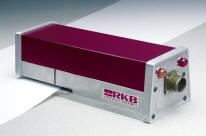
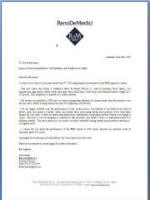
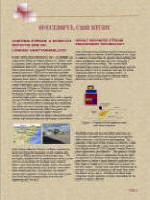
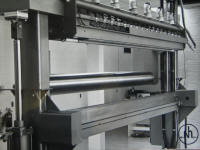
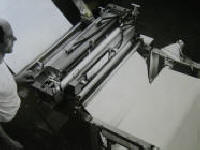
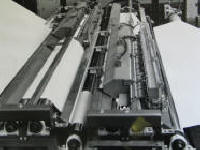
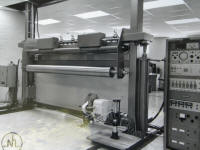
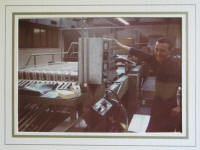
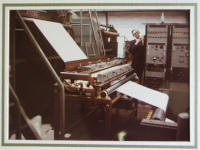
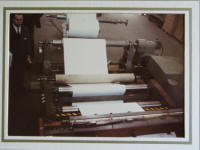
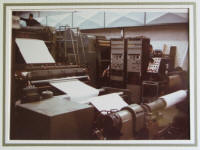
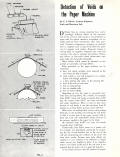
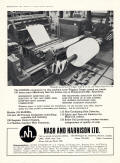 1964: In
1964, the company became the leading supplier of machine vision in
Europe (at that time there were no significant European companies
producing machine vision technologies). However, Government backed
programs and intellectual property appropriation facilitated the
introduction of various competitive companies in Finland, Sweden and
Germany.
1964: In
1964, the company became the leading supplier of machine vision in
Europe (at that time there were no significant European companies
producing machine vision technologies). However, Government backed
programs and intellectual property appropriation facilitated the
introduction of various competitive companies in Finland, Sweden and
Germany.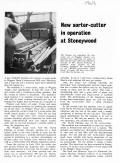 1965:
By 1965, the
company had installed hundreds of systems worldwide with its
installation at Wiggins Teape, Aberdeen, Scotland and Champion
Papers, Hamilton, OH (chromekote) making it the leader in on-line
high speed machine vision technology.
1965:
By 1965, the
company had installed hundreds of systems worldwide with its
installation at Wiggins Teape, Aberdeen, Scotland and Champion
Papers, Hamilton, OH (chromekote) making it the leader in on-line
high speed machine vision technology.

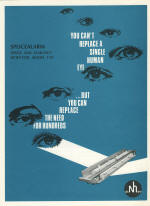
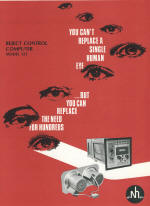
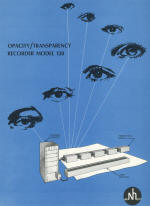
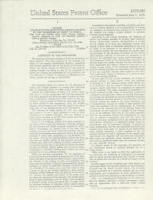 Late 1960's: The
late 1960's saw significant changes in the industry. The industry
saw competitors emerging such as Cutler Hammer, Sick Optic, ULMA and
some Asian manufacturers. At the same time, larger
multinational companies were looking to diversify into other
industries they felt would enhance current technologies they
offered. Once such company was Leigh Controls Limited, a major
player in the avionics industry.
Late 1960's: The
late 1960's saw significant changes in the industry. The industry
saw competitors emerging such as Cutler Hammer, Sick Optic, ULMA and
some Asian manufacturers. At the same time, larger
multinational companies were looking to diversify into other
industries they felt would enhance current technologies they
offered. Once such company was Leigh Controls Limited, a major
player in the avionics industry.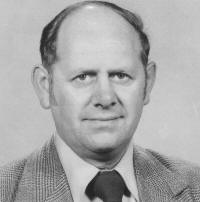 1979:
1979 was a
year that saw significant gains in machine vision technology. The
company had completed and patented the first camera-based vision
system used for online web inspection. Designed for film processing
lines, the new camera system provided detection capabilities far
beyond typical photomultiplier, laser or phototransistor
technologies. However, it would not be until 1986 and the invention
of CCD technology that other suppliers would catch onto the
successful use of camera technology as a sensing platform. By then
our company had over 8 years experience in filtering techniques specific
to camera-based technology allowing us to provide a more stable
and reliable inspection overall.
1979:
1979 was a
year that saw significant gains in machine vision technology. The
company had completed and patented the first camera-based vision
system used for online web inspection. Designed for film processing
lines, the new camera system provided detection capabilities far
beyond typical photomultiplier, laser or phototransistor
technologies. However, it would not be until 1986 and the invention
of CCD technology that other suppliers would catch onto the
successful use of camera technology as a sensing platform. By then
our company had over 8 years experience in filtering techniques specific
to camera-based technology allowing us to provide a more stable
and reliable inspection overall. 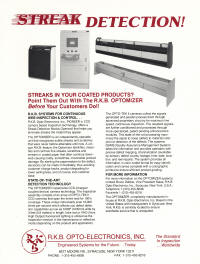 1992:
In 1992,
William Dobbie again designed an innovative technology for the
detection of coating streaks. Unequaled in performance by any other
competitive solution, even today, this technology allows
customers the ability to detect coating streaks and scratches that
have long plagued coating material manufactures. With the ability
to detect streaks as small as 1 micron, this patented and innovative
solution truly presented a quantum leap in inspection technology.
1992:
In 1992,
William Dobbie again designed an innovative technology for the
detection of coating streaks. Unequaled in performance by any other
competitive solution, even today, this technology allows
customers the ability to detect coating streaks and scratches that
have long plagued coating material manufactures. With the ability
to detect streaks as small as 1 micron, this patented and innovative
solution truly presented a quantum leap in inspection technology.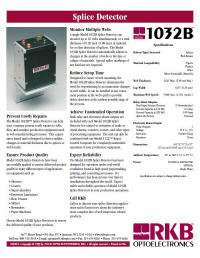 1997:
In conjunction with
Jagenberg, our company was tasked to come up with a
splice detection solution for center of web mounting that
facilitated the innovations of our standard edge mount unit.
This would eliminate the need for operational intervention for
deckle changes. After careful development, our company
introduced it's 1032B Center Mount Splice Detector (joint detector)
based on capacitive technologies. Over the span a few years,
this unit became the second most widely used technology worldwide in
both paper and conversion processes.
1997:
In conjunction with
Jagenberg, our company was tasked to come up with a
splice detection solution for center of web mounting that
facilitated the innovations of our standard edge mount unit.
This would eliminate the need for operational intervention for
deckle changes. After careful development, our company
introduced it's 1032B Center Mount Splice Detector (joint detector)
based on capacitive technologies. Over the span a few years,
this unit became the second most widely used technology worldwide in
both paper and conversion processes. 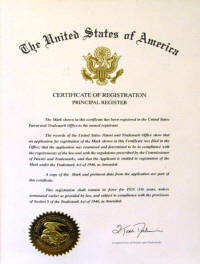 2002:
towards the
end of the 90's, our company had received many requests for a
reliable splice detection solution for metalized materials such as
food packaging. To date there was not alternative and no
successful technology in place. Once again, our companies
research and development pain-stakenly develop a solution that will
work on foil type materials. Part of the overall objective was
to also ensure the unit could be used for non-metallic material as
well to better provide flexibility to the consumer packaging market.
In March 2002, our company released the first successful splice
detection (joint detector) for metalized material used in the
process of holographic packaging and securities.
2002:
towards the
end of the 90's, our company had received many requests for a
reliable splice detection solution for metalized materials such as
food packaging. To date there was not alternative and no
successful technology in place. Once again, our companies
research and development pain-stakenly develop a solution that will
work on foil type materials. Part of the overall objective was
to also ensure the unit could be used for non-metallic material as
well to better provide flexibility to the consumer packaging market.
In March 2002, our company released the first successful splice
detection (joint detector) for metalized material used in the
process of holographic packaging and securities.